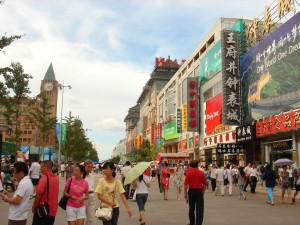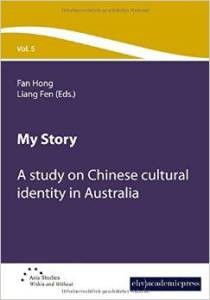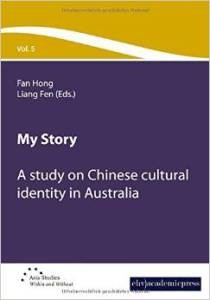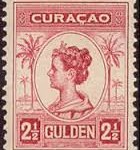打工妹 ~ Migration As A Means To Female Emancipation
Abstract
In the contemporary globalized society, migration and urbanization have become pivotal processes that involve large parts of the world population and have drawn the attention of analysts. Scholars from a variety of disciplines have analysed these two phenomena all over the world from different perspectives and with different aims. This paper explores the present situation of the so-called 打工妹 dagongmei (young Chinese migrant women) who arrive in big cities from small villages seeking social emancipation or to escape from patriarchy and other social impositions they are pushed to accept as young women.
Female emancipation has been an important goal for the Chinese Communist Party (CCP) since before the establishment of the People’s Republic of China in 1949. Following Friedrich Engels’ “The Origin of the Family, Private Property, and the State” and the Marxist theory of female emancipation as a class issue, the CCP tried to involve Chinese women in labour (i.e. farming and industrial labour). During the 1980s, feminists and intellectuals began to criticize this policy because it had failed in its goal to bring emancipation to Chinese women.
The present research revolves around the understanding of the concept of 自由 ziyou (freedom) among female migrants in Beijing. According to the results of the survey, “freedom” has different meanings for the young women but it is possible to sum them up in three correlated categories: 自由 ziyou meaning economic freedom, or economic independence with no necessity to rely on someone else (family or partner); 自由 ziyou, the absence of familial control; and 自由 ziyou, the discovery of new urban realities and subsequent experiences of great importance for personal development and education.
Introduction
Since the implementation of the policy of reform and opening-up promoted by the “little helmsman”, Deng Xiaoping, at the end of 1970s, the People’s Republic of China has been and is still experiencing huge internal migration. This is a mass migration with no precedent in human history. At the beginning of the 1980s, there were only 20 million migrants in China; by 2009, this number had reached almost 150 million (俞可平 Yu Keping, 2010). Independent media reports (Yardley, 2004) now indicate that more than 200 million individuals have marched from rural areas to the industrialized areas of eastern China. Almost one third of this figure is made up of female migrants. In certain areas and in specific industrial sectors such as textiles, manufacturing, cleaning, and the sex industry, the percentage of women reaches 70 (Jacka and Gaetano, 2004).
It is not possible to study and analyse Chinese domestic migration without taking into account the cultural, political, social, and economic complexity of the country. The scope of the current chapter does not allow for an extensive analysis, so it will approach the issue of the 流动人口 liudong renkou (or “floating people”, the term usually used by Chinese media to refer to migrants) from a qualitative perspective and limit the geographical area of analysis to the city of Beijing. Furthermore, this chapter will attempt, to a certain extent, to observe if and how the process of migration to Beijing from the countryside is a means of emancipation for the thousands of young female workers who undertake the move. The findings of the present chapter are the results of an ethnographic research based on semi-structured interviews and direct observation of young female migrants in Beijing between March 2009 and December 2010.
Studies on Chinese migration from a gender perspective started in the early 1990s. Important contributions in this field come from the research of Chinese and international scholars like Li Xiaojiang, Lee Ching Kwan, Pun Ngai, Li Yinhe, Zheng Zhenzhen, Honig Emily, Tani Barlow, Dorothy Ko, Elizabeth Croll, Zhang Hong, Tamara Jacka, Zheng Tiantian, and Rachel Murphy.
During the Maoist era, the All-China Women’s Federation (ACWF) followed with fervour the political views of the Chinese Communist Party. They participated in basing the issue of women’s liberation on the theory of classic Marxism, mainly inspired by the analysis of Friedrich Engels in his “The Origin of the Family, Private Property and the State” (1884). Critical and independent thought about women’s condition in China spread in academic and intellectual circles only at the end of the Maoist era.
According to the results of a survey entitled “Migrant workers and gender” (农民流动与性别 Nongmin Liudong Yu Xingbie, 2000), beyond the traditional socio-economic reasons and the “push and pull” factors, there are at least three factors motivating this new generation of young women to move from the countryside to big cities like Beijing: 1) to earn money, 2) to learn and seek personal development, and 3) to see the world. Thus, leaving home seems to be more a personal and free choice for individual emancipation than a need created by harsh economic conditions or miserable living standards in the place of origin. In fact, if during the 1980s it was very unpopular (or, in other words, not virtuous) for a woman of peasant origins to leave her village and work in the service industry in urban areas, nowadays Confucian morality seems to have given way to the need for mobility and speed dictated by the country’s rapid economic development:
“Women’s migration in China may at one time have been a signal of extreme poverty or desperation, but this is no longer the case. Now it is seen as a rite of passage by some young women, or at least a great adventure. In most cases the motive is still cash income, but often money is to be amassed for specific consumption goals, such as a new home, a bridal dowry, the bride-price for the girl’s brother, or education expenses for younger siblings.” (Jacka, 2004)
Of the many ways used by academics and media to define Chinese migrants, the one closest to the subject of this study is 打工妹 dagongmei. 打工 dagong literally means “to work”, “to temp”, or “to sell labour”, while 妹 mei or 妹妹 meimei is translated as “younger sister” or “little sister” (Lee, 1998; 潘毅 Pan Yi, 黎婉薇 Li Wanwei, 2006; Yan, 2008). It is a term of Cantonese origin, used since the 1980s, to refer to the young migrants who ended up working in the factories of Guangdong Province, the “world’s factory”. Today, it is still used but more widely to refer to young girls (usually aged between 16 and 25) who leave the rural areas to work in the urban ones. They have a low educational level, are not skilled workers, and many of them come from poor economic backgrounds. And, perhaps most important from a sociological point of view, they are not married. Read more
Violence And Identity ~ The “Self” And The “Other”: An Exploration Of Ethnic Relations And Conflict In China’s Xinjiang Uyghur Autonomous Region
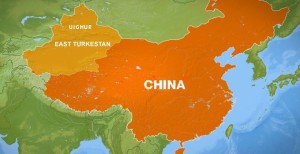 Abstract
Abstract
On the night of 5 July 2009, Urumchi, the provincial capital of the Xinjiang Uyghur Autonomous Region (XUAR), witnessed the worst outbreak of ethnic rioting in the history of the People’s Republic of China (Wong, 2009). According to official figures, 197 people were killed and over 2,000 injured (Xinhua, 2009a). The majority of those who died were of Han ethnicity. The Han make up over 92 per cent of the Chinese population but are in a minority in Xinjiang. Their attackers were mostly of Uyghur ethnicity, a Turkic Muslim ethnic group which is in the majority in Xinjiang. The 2009 riot was not an isolated event, but the worst in a series of sporadic outbreaks of violence in recent years. These outbreaks of violence have brought renewed focus, both within China and internationally, on the issue of ethnic relations in Xinjiang and on the Chinese government’s minority policy and have had a significant impact on the construction and maintenance of the social boundaries that exist between both groups.
Introduction
Xinjiang, which translates as “New Dominion” or “New Frontier” in English, is a vast resource-rich province twice the size of Western Europe. At just under 1.7 million square km, it makes up one sixth of the People’s Republic of China and borders Russia, Kazakhstan, MongoIia, Kyrgyzstan, Pakistan, India, Afghanistan, and Tajikistan. It is of enormous strategic and economic importance but remains, as it always has been, a potential tinderbox, as its peoples, old and new, struggle to find their place in an ever-shifting landscape. The central government is determined to secure control of this key region in the face of continuing resentment from its indigenous peoples (Bovingdon, 2010).
According to the 2010 Census (Xinjiang Statistical Year Book 2009) Uyghurs make up 45.21 per cent of the population of Xinjiang, numbering 8,345,622 people. The Han make up 40.58 per cent with 7,489,919 people. Next come the Kazakhs, who number just over 1 million, followed by: Mongol; Dongxiang; Tajik; Xibe; Manchu; Tuja; Uzbek; Russian; Miao; Tibetan; Zhuang; Daur; Tatar; and Salar. The 2000 census also shows that during the 1990s, Xinjiang’s Han population grew by 31.6 per cent, mostly due to inward migration. This is twice the rate of the indigenous ethnic groups (up 15.9 per cent), who supposedly benefit from more relaxed family planning policies compared to the rest of China. This influx has considerably heightened the competition between the Han and local ethnic groups for land and water resources in rural areas, and for jobs in urban areas. While the most recent census was carried out in 2010, the full figures on Xinjiang’s ethnic makeup had still not been released at the time of writing. The figures that have been released show the figure for the Han was hovering around the 40 per cent mark, while the Uyghur figure has fallen significantly to 42 per cent (Xinjiang Statistical Yearbook 2011).
Ethnic identity (minzu – 民族 ) in China, and in Xinjiang particularly, is both clearly defined by the state and controversial. In Xinjiang, China’s most ethnically diverse region and also its most restive, ethnicity has a particular resonance. This chapter conceptuaIizes ethnicity in Xinjiang both in terms of a classical Weberian definition of”ethnic groups” as “human groups that entertain a subjective belief in their common descent because of similarities of physical type or of customs or both, or because of memories of colonisation or both” (Weber, 1968, p. 389) and the official Communist Party interpretation of ethnicity based on Stalin’s definition of historically formed stable communities of language, territory, economic life, and psychological formation, manifested through a common culture (Stalin, 1953). It understands ethnic identity as something that is self-conscious and that this self-consciousness often has its source in the labels used by others. As Stephen Cornell and Douglas Hartman (2007) argue, the identity that others assign to us can be a powerful force in shaping our own self-concepts. Essential to this exploration of Han and Uyghur identity will be the assumption that an ethnic group cannot truly exist in isolation, it has meaning only in a context that involves others.
Based on a large number of interviews carried out in Urumchi from 2009 to 2012, this chapter is divided into two parts: part one will give a detailed account of the riots based on eye witness accounts together with contemporaneous news reports; part two seeks to examine how the violence of 2009 has affected how the Han and Uyghur see the themselves and each other and the role of social boundaries and relational comparisons in the creation and maintenance of group identities.
My research takes as a basic theoretical assumption Fredrik Barth’s (1969) conceptualization of ethnicity, which emphasizes that it is the ethnic boundary that defines a group. Barth maintained that ethnic identities do not derive from intrinsic features but emerge from, and are reasserted in, encounters, transactions, and oppositions between groups. An ethnic group can only be defined and structured from within, and only these “objective” differences considered significant by the actors themselves are taken into account. He asserts that categorical ethnic distinctions do not depend on an absence of mobility, contact, and information but do entail social processes of exclusion and inclusion. It is not so much who we are, rather, who we are not. Barth also argues that identity must be selected by groups themselves, a process he calls “self-ascription” (Barth, 1969, p.4).
Part One
Urumchi aflame: the causes and consequences of the 5 July riot
In the run-up to the 2008 Beijing Olympics, the authorities expressed concern over Uyghur separatist groups potentially plotting to disrupt the games. At the beginning of 2008, it claimed to have broken up a number of plots and to have found equipment used in the making of explosives as well as four kilograms of yell ow sulphur and 100 kilograms of nine other types of chemicals, along with computer equipment and disks containing “holy war” materials. Police claimed the suspects were planning to attack the Olympics as weIl as other government targets in Beijing and Shanghai (Hastings, 2011). In March, the authorities announced they had thwarted an attempt by Xinjiang “terrorists” to hijack a Beijing-bound passenger airplane and crash it. However, despite its heightened security operation in Xinjiang, two violent incidents in Xinjiang did overshadow the opening of the Olympics.
On 4 August, just days before the games were due to open, two men armed with knives and explosives ambushed military police who we re exercising outside their station in Kashgar. State media reported that the attackers had killed 16 officers and wounded 16 others. Days later on 9 August, 12 explosive devices were detonated in attacks on at least four local government buildings, a supermarket, and hotels in the city of Kucha, killing a security guard and at least 10 of the suspected attackers (Jacobs, 2008; Yardley, 2008). Read more
My Story ~ A Study On Chinese Cultural Identity In Australia – Contents & Preface
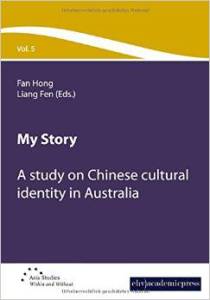 The book My Story ~ A Study On Chinese Cultural Identity In Australia, edited by Fan Hong and Liang Fen has been launched during an international event in Perth, Australia. The book had been published as volume 5 of the series Asia Studies – Within and Without – a book series that is kindly supported also by Rozenberg Quarterly.
The book My Story ~ A Study On Chinese Cultural Identity In Australia, edited by Fan Hong and Liang Fen has been launched during an international event in Perth, Australia. The book had been published as volume 5 of the series Asia Studies – Within and Without – a book series that is kindly supported also by Rozenberg Quarterly.
Contents:
Preface (See below)
Feng Jicai – A Creative Research Project
Dennis Haskell – Foreword
Jan Ryan – Foreword ~ Chinese in Australia, 1980 –
The first story: Sometimes, Flowers Bloom Even More Beautifully In A Foreign Soil
2: The Country Behind The Forests
3: Many Small Stones Can Build A Pyramid – That Is How Miracles Are Created
4: I Remain A Typical Chinese Person
5: Three Words, One Marriage
6. From “Falling Leaves Settling On The Roots” To “Falling Leaves Growing From The Roots”
7. I Will Repay My Motherland For Nurturing Me
8. From Chinese Country Boy To An Australian Professor
9. Who Is The Foreigner In This Place?
10. A Party With One Member
11. Start From Simplicity
12. An Ordinary Road
13. While Travelling Life’s Journey, Cherish Every Step And Every Stop Along The Way
14. Seeking A Better Life, Doing Meaningful Things
15. Never Say “Give up”
16. A Love Story
17. A Unique Personal Statement
18. Full Circle
19. We Are The Masters Of Our Destiny
20. A Special Representative
21. Reborn ~ New Family, New Vision And New Career
22. Only By Creating Your Own World Can You Create A Real Life
23. For All Walks Of Life, There Must Be A Master
24. The Older I Get, The More I Enjoy My Life
25. Half Australian And Half Chinese
26. Keep Your Nose To The Grindstone, You Will Be Successful In The End
Acknowledgement
Preface
The first wave of immigration from China to Australia appeared in the mid-19th century provoked largely by the gold rush of that period. In the 1861 census of Australia’s population there were over 38,000 Chinese migrants in Australia and by 1947 it had fallen to 6,400.
Since the 1980s there has been a new wave of Chinese immigration to Australia, and there are now over 415,000 Chinese immigrants, or ‘Chinese Australians’. Chinese migrants record high levels of educational attainment that match and occasionally surpass the national average. With a high degree of academic achievement and upward socioeconomic mobility, those Chinese Australians who were born post the 1950s and post 1980s are among the most well educated groups in Australia and comprise a large percentage of Australia’s educated class.
我的故事 ~ 在澳华人的文化身份认同研究 ~ 故事
Fan Hong & Liang Fen 凡红 梁芬
Feng Jicai ~ 冯骥才
Dennis Haskell ~ 丹尼斯·哈斯克尔
Jan Ryan ~ 简·瑞安
故事
1. 有时候换一片土壤,也许可以开出不一样的花
2. 森林背后的国家
3. 小事做起,积沙成塔
4. 地地道道的中国人
5. 三字成婚
6. 落叶生根
7. 回报祖国
8. 从中国娃到澳洲大学教授
9. 到底谁是外国人
10. 一个人的党
我的故事 ~ 前言
十九世纪中叶,随着澳洲淘金热,出现了第一次中国人移民澳大利亚的浪潮。据澳大利亚1861年人口统计数据显示,当时在澳华裔人口高达三万八千多。而到了1947年,在澳华裔人数跌至六千四百人。
自二十一世纪八十年代起,从中国来澳大利亚的移民又出现了一个新的浪潮。目前在澳洲生活和工作的华裔超过四十一万五千多人。在他们中间,受过中高层次文化教育的人数已经达到,甚至超过了澳大利亚全民教育平均水平。这些出生于五十年代后和八十年代后的新一代澳洲华人,凭借自身学术上的显著成就和对社会发展的卓越贡献,使他们在澳大利亚受过高等教育者的行列中占据了一席之地。
此项在澳华人的文化身份认同研究为西澳大学孔子学院开展的关于海外华人文化身份认同研究专题的一部分。我们将通过这项研究,集中讲述在二十一世纪八十年代中国改革开放后移民到澳大利亚的中国人的经历。我们将向世界讲述他们的故事,这些故事中有欢乐,有悲伤,有艰难,有成功,也有兴奋。我们将通过这项口述史,进一步探讨中国人在澳大利亚的文化身份认同,使他们的成就以及他们对这片远离中国,辽阔无垠的土地所做出的贡献得到认可。
在进行此项目的过程中,我们发现所有被采访者,不管他们在这片土地上生活了多少年,不管他们在这里取得了多大的成就,他们都始终无法回避一个问题,既文化身份认同的问题。可能每个人都有各自不同的答案,我们想通过这个项目,就每一位海外华人所关心的有关文化身份认同的问题进行深入地研究和探讨。
该项研究包括采访搜集100名在澳华人的故事,他们当中有工人、商人、企业家、政治家、医生、律师、大学教授、在读大学生及家庭主妇等各行各业人士。我们将采访录音誊写成文,之后编撰成书,书名为《我的故事》,以中英文双语,分集出版发行。
本书为 《我的故事 — 在澳华人的文化身份认同研究》第一集,共讲述了30名在澳华人不同的经历 – 从他们最初怀揣着各自的梦想,踏上澳洲这片陌生的土地时的情景;回顾他们从最简单开始, 用自己的双手和智慧开辟出属于自己的天地的感慨;分享他们打拼创业,功成名就时的喜悦。与此同时,了解他们成功不忘祖国,为让更多的人拥有更美好的生活而继续努力工作,奉献爱心的情怀。
本项目自开始以来,得到西澳大利亚和其他地区的华人社团及各界澳洲华人朋友们的热情支持,他们在繁忙的工作生活中抽出宝贵的时间接受我们的采访,而且还为我们推荐其他华人朋友参与此项目。谨在此表示诚挚的感谢。为了尊重那些不愿被提名的被采访者的要求,除个别故事以外,书中大部分故事主人公的真实姓名被隐去。我们想让大家分享这些动人的真实故事,而这些人也许就生活在你们的社区,甚至就在你的身边。我们想让后一代人记住他们父辈当年打拼创业的故事,沿着他们走过的路,继续向前。
我们诚挚地感谢冯骥才先生、丹尼斯·哈斯克尔教授、简·瑞安教授、王毅博士以及林功金先生对项目的指导,参与和鼎力相助。
我们还要诚挚地感谢John C. Reeves 先生,Ian Henry教授, 陈红博士和余成功老师担任本书英文版校对工作,感谢王力永老师和王振宇老师的中文版校对。感谢关志逊, 刘利,张慧杰三位博士生的协助编辑。感谢承担本项目誊写工作的西澳大学孔子学院的志愿者们,他们是胡思宇、赵薇、周昱、张翔蔚、侯景煜,姜明雪。
最后,感谢担任本书撰写的西澳大学孔子学院汉语教师团队。正是由于大家共同的努力,才使本书在短短不到一年的时间便呈现在读者面前。
希望大家喜欢我们的故事并以此推动跨文化研究的发展。敬请各位专家学者和读者批评指正。
凡红 梁芬
My Story ~ A Creative Research Project
 For immigrants, identity is a kind of deep cultural psychology, the pursuit of a mental end-state, and a key part of their specific humanity. Since Australia is an important place for Chinese immigration, research on immigrants’ history, their personal struggle, the cultural conflict and integration between themselves and society, as well as their sense of ‘life-achievement’ are also important. They will contribute to the affirmation and understanding of immigrants’ value and identity, to their particular contribution to Australia’s development and social harmony, as well as to the active exploration of the impact of Australia’s, multicultural policy.
For immigrants, identity is a kind of deep cultural psychology, the pursuit of a mental end-state, and a key part of their specific humanity. Since Australia is an important place for Chinese immigration, research on immigrants’ history, their personal struggle, the cultural conflict and integration between themselves and society, as well as their sense of ‘life-achievement’ are also important. They will contribute to the affirmation and understanding of immigrants’ value and identity, to their particular contribution to Australia’s development and social harmony, as well as to the active exploration of the impact of Australia’s, multicultural policy.
Oral history is an academic approach which has grown in importance since its origins in the 20th century and has been adopted in a wide range of disciplines from anthropology, sociology, and cultural studies, to literary heritage. As a kind of living history record focusing on people, studying personal memories, oral history has a unique historical and academic value.
In adopting this approach to the study of the cultural identity of Australian Chinese immigrants, the Confucius Institute at the University of Western Australia has seized upon a very visionary and creative subject. I believe that this project will gradually demonstrate its academic significance, it is certainly a good place to start from,, and we will look forward to sharing this academic achievements.
Feng Jicai
Deputy President of China Federation of Literary and Art Circles
Consultant of State Council of the People’s Republic of China
19 October 2014
